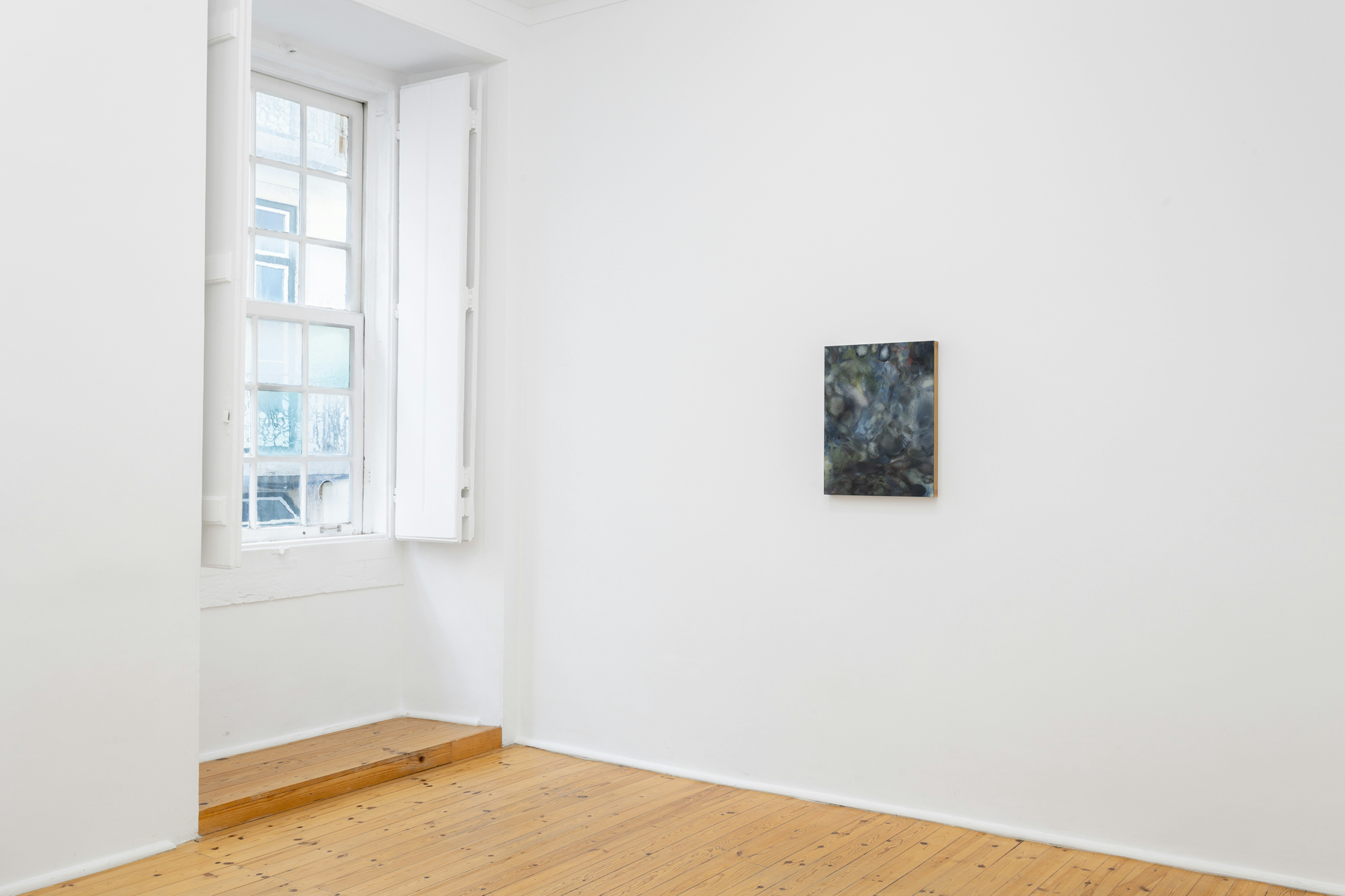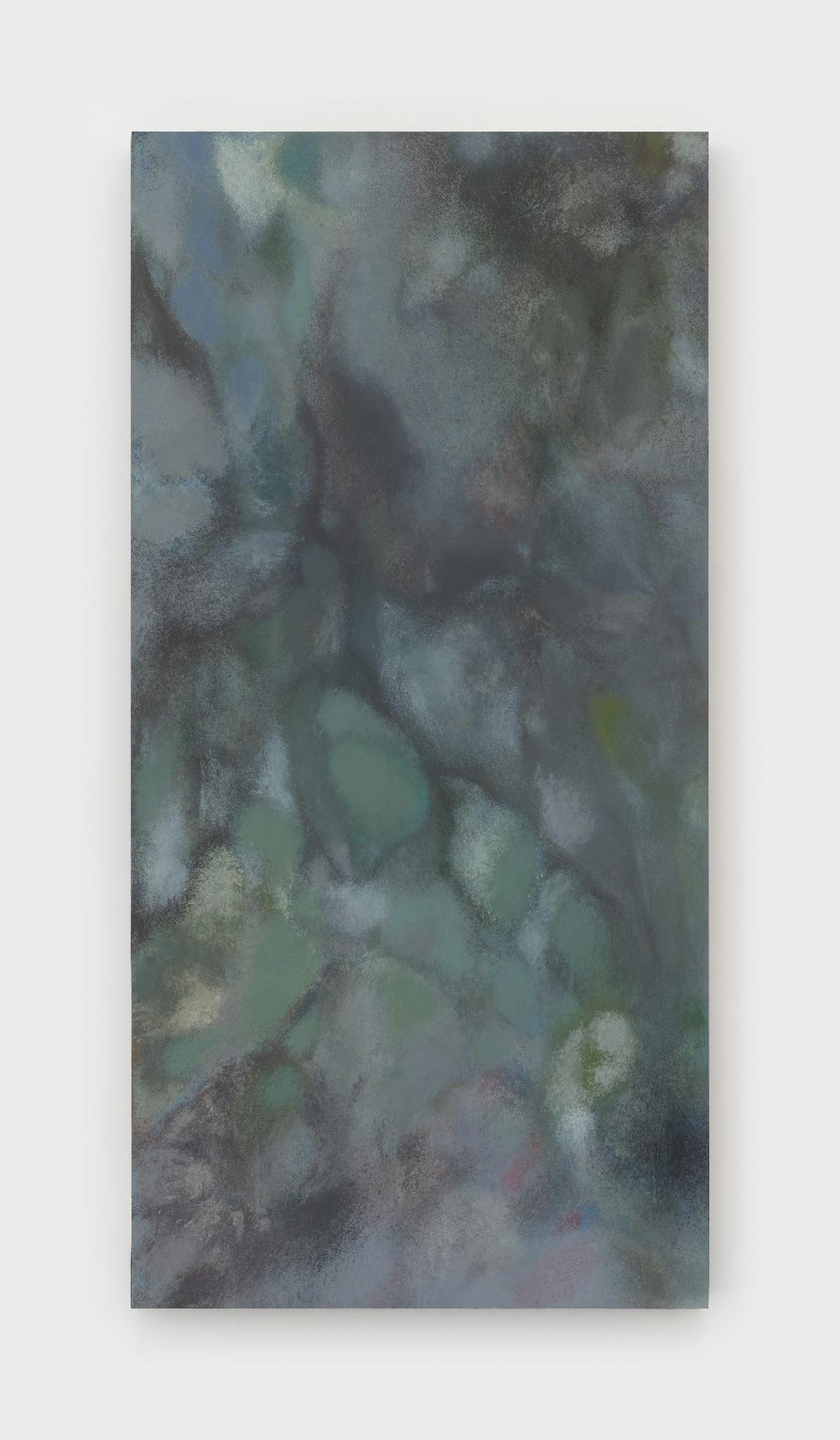ADZ
Rua do Crucifixo 28, First Floor, Lisboa
Wednesday–Saturday 11–5pm
info@adz.gallery
+351 932 989 202
Andy Giannakakis
'Gutting a Machine Elf'
Opening reception; Friday, 24th November, 8-10pm
Since the birth of his daughter, Andy’s been hard to locate. He lives in a house with no front door and no street numbers. I drive up Mullholland from Cahuenga, passing buses of tourists heading out of the hills and hikers leaving the park as the sun goes down. As I drive into Nichols Canyon the streets become narrow, root furrowed and cracked. I get my bearings as I pass the driveway of Gena Rowlands and John Cassavetes' old house with the yellow awning. I turn onto a cul-de-sac. It’s quiet when I park. Andy appears out of a bamboo hedgerow, tan and smiling. He’s left his studio and paints outdoors now.
In the 1983 issue of Art in America Lee Lozano published a statement about her series of wave paintings. She writes:
I was trying to combine science and art and existence. One thing I always liked was this idea of energy that is not contained by the edges of the canvas. It’s like a close-up of a huge thing that wouldn’t even be a structure of human size. It would be something imagined, some energy that took on solidity.
The paintings are on a pool table when I walk into the house, the deep green of the felt table enhancing the earth tones in the works. Though each is a distinct piece, together they begin to appear as part of a larger picture; their surfaces almost extend to one another. In Lozano’s words, they resemble “a close-up of a huge thing.” Each painting reads as the artist’s attempt to capture something huge, nearly everything — a gesture which is at odds with their objectness. And while there is an embrace of something vast; there is a simultaneous refusal. He won’t allow the illusion to clot, he won’t allow a figure to announce itself for long. Above all he won’t tolerate simple solutions to the problems of illusion he creates for himself.
The paintings in “Gutting a Machine Elf,” suggest a similar edging out — refusing the appearance of something whole. They are small and dark, oil-on-wood, murky renderings of light and shadow. At times they appear derelict, or unfinished. Many of them seem faded by the sun. But with closer examination a unique kind of painting seems to exist, a painting of chance diffraction subtly applied and only accessible from certain vantage points. It seems like each work contains a multitude of paintings, a multitude of moments of this refusal. Both anti-aesthetic and deeply beautiful.
Andy’s work is at odds with the prevailing conformity in contemporary abstract painting. He ’s never made the same painting twice. Over the years the paintings have become darker and have lost their vibrant colour or and expressionistic joy. They are not meant to transcend, they do not exist to serve as an antidote, they are not meant to suck you in any more than they are to spit at your feet. They are cold and humming and umbrageous novelties. As alluded to in the exhibition's title, Andy says of painting, “...I don’t like to talk about it...the distortions...it’s become decadent..twisted out of shape...I can’t get accurate information from it anymore...I’m just botching it up now and gutting it like an old pig.”
Gracie Hadland






















